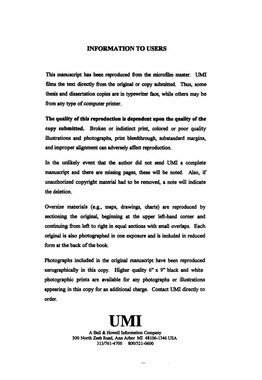| dc.contributor.advisor | Taylor, Richard W., | en_US |
| dc.contributor.author | Khanna, Neeraj. | en_US |
| dc.date.accessioned | 2013-08-16T12:29:39Z | |
| dc.date.available | 2013-08-16T12:29:39Z | |
| dc.date.issued | 1997 | en_US |
| dc.identifier.uri | https://hdl.handle.net/11244/5488 | |
| dc.description.abstract | The second part of the study involved the reactions of nickel(II) and magnesium(II), with the ionophore ionomycin and the model compound 2,6-dimethyl-3,5-heptanedione (DMHD). A detailed analysis of the kinetic data for these reactions required information about the keto-enol isomerism exhibited by these ligands. These studies were conducted using NMR spectroscopy, pH-jump and rapid dilution experiments. It was observed that the keto-enol interconversion of ionomycin and DMHD is catalyzed by buffers. The buffer independent rate constants for the enolization and ketonization for ionomycin are approximately two orders of magnitude higher than those of DMHD. An intramolecular base-catalyzed mechanism is proposed for the isomerization of ionomycin. The enol/keto ratios for ionomycin and DMHD were determined to be 7.33 and 2.84, respectively, from the NMR experiments. The kinetic data obtained for the reactions of ionomycin and DMHD with Ni(II) is consistent with a mechanism in which the enol form of the ligand reacts with the metal ion. The formation reactions of ionomycin with Mg(II) in presence of buffers proceed by a mechanism in which a protonated metal-ligand precursor complex is formed. These reactions are catalyzed by the basic form of the buffers. The dissociation of the Mg(II)-ionomycin complex is catalyzed by the acid form of the buffer. | en_US |
| dc.description.abstract | Two biologically relevant systems have been explored that involve the reactions of divalent metal ions with multidentate ligands that coordinate through oxygen atoms. The first part of the study involved kinetic investigations of the reactions of nickel(II) with a variety of hydroxamic acids (R$\sb1$C(O)N(OH)R$\sb2$) with different steric and electronic properties where, R$\sb1$=C$\sb6$H$\sb5$, 4-NO$\sb2$C$\sb6$H$\sb4$, 4-CH$\rm\sb3OC\sb6H\sb4$, trans-C$\sb6\rm H\sb5$CH=CH, 1-C$\rm\sbÔΩ̜H\sb7; \ R\sb2$=H and R$\sb1$=R$\sb2$=C$\sb6\rm H\sb5$. These reactions were studied in aqueous medium using the stopped-flow technique. The kinetic data is consistent with a mechanism in which the protonated and unprotonated forms of the ligands react with Ni(II) by a parallel path mechanism. The rate constants for these pathways are reported. | en_US |
| dc.format.extent | xxii, 270 leaves : | en_US |
| dc.subject | Ligands (Biochemistry) | en_US |
| dc.subject | Chemistry, Inorganic. | en_US |
| dc.subject | Chemistry, Biochemistry. | en_US |
| dc.subject | Chemical kinetics. | en_US |
| dc.subject | Chemistry, Analytical. | en_US |
| dc.subject | Coordination compounds. | en_US |
| dc.title | Part I. Kinetic studies of the complexation reactions of nickel(II) with hydroxamic acids in aqueous medium. Part II. Kinetic studies of the formation and dissociation reactions of ionomycin and 2,6-dimethylheptane-3,5-dione with nickel(II) and magnesium(II) in 80 percent methanol-water medium. | en_US |
| dc.type | Thesis | en_US |
| dc.thesis.degree | Ph.D. | en_US |
| dc.thesis.degreeDiscipline | Department of Chemistry and Biochemistry | en_US |
| dc.note | Adviser: Richard W. Taylor. | en_US |
| dc.note | Source: Dissertation Abstracts International, Volume: 58-03, Section: B, page: 1256. | en_US |
| ou.identifier | (UMI)AAI9728708 | en_US |
| ou.group | College of Arts and Sciences::Department of Chemistry and Biochemistry | |
